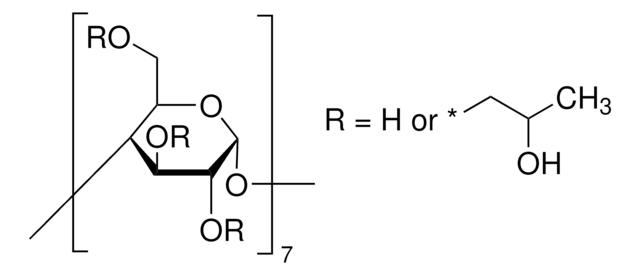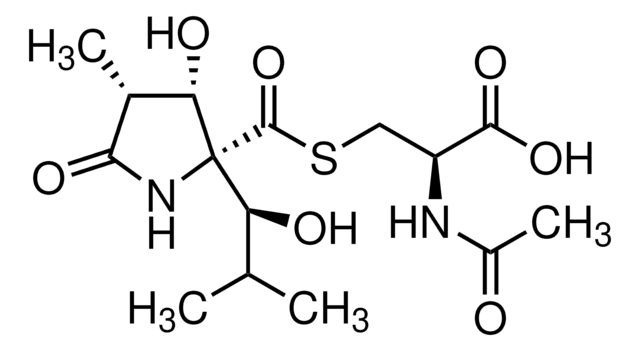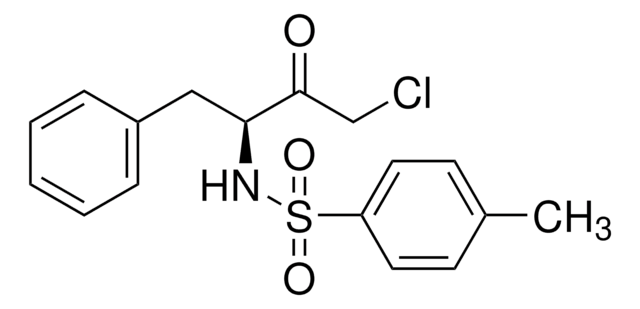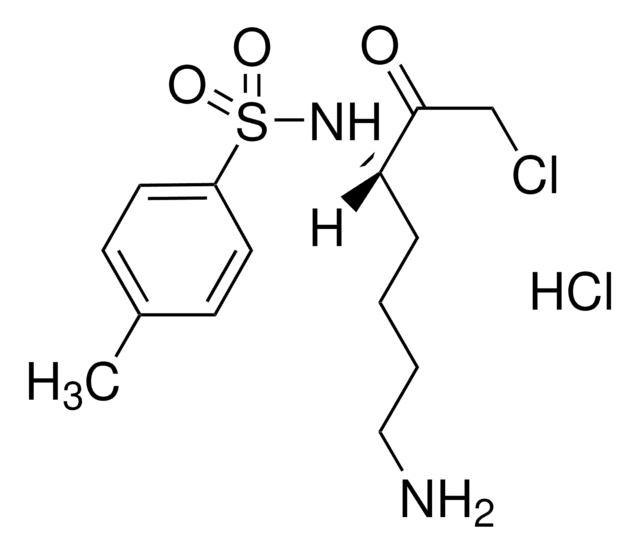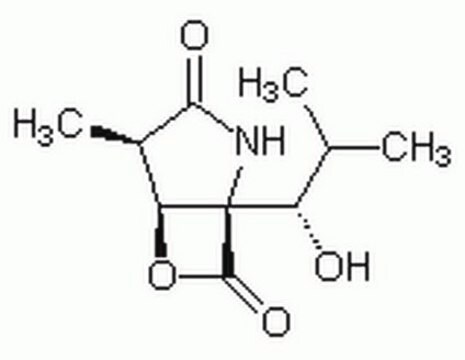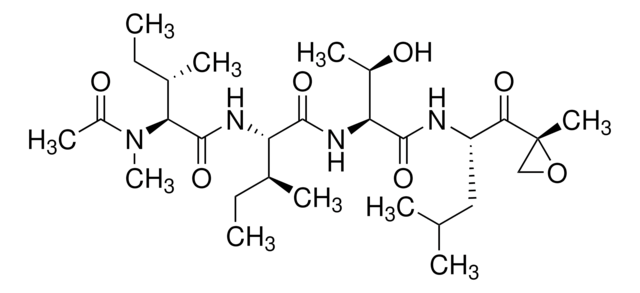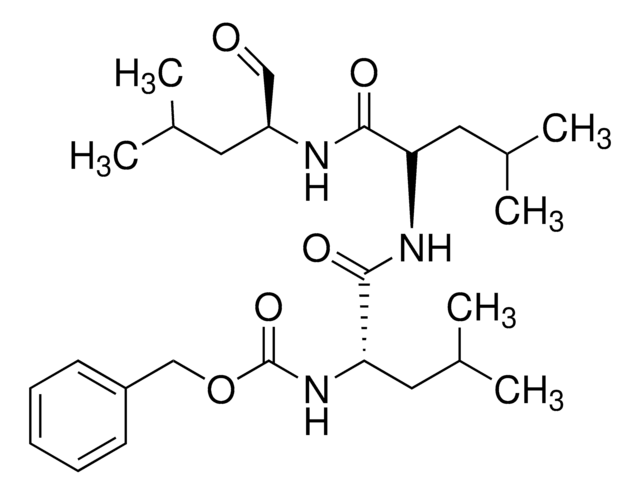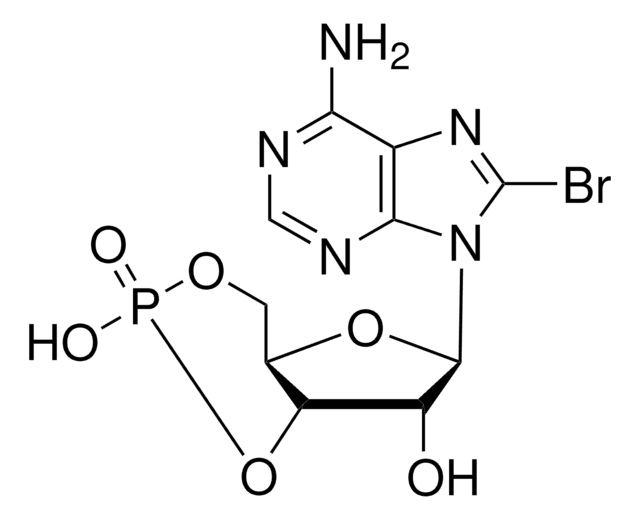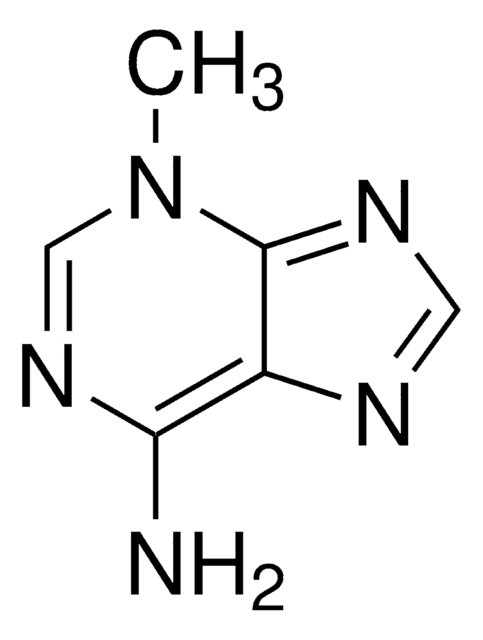L7035
clasto-Lactacystin β-lactone
Synonym(s):
(1R,4R,5S)-1-[(1S)-1-Hydroxy-2-Methylpropyl]-4-Methyl-6-Oxa-2-Azabicyclo[3.2.0]Heptane-3,7-Dione, Omuralide
Sign Into View Organizational & Contract Pricing
All Photos(1)
About This Item
Empirical Formula (Hill Notation):
C10H15NO4
CAS Number:
Molecular Weight:
213.23
MDL number:
UNSPSC Code:
12352200
PubChem Substance ID:
NACRES:
NA.77
Recommended Products
Assay
≥95% (HPLC)
Quality Level
form
film
solubility
DMSO: soluble 25 mg/mL
storage temp.
−20°C
SMILES string
[H][C@@]12OC(=O)[C@@]1(NC(=O)[C@@H]2C)[C@@H](O)C(C)C
InChI
1S/C10H15NO4/c1-4(2)6(12)10-7(15-9(10)14)5(3)8(13)11-10/h4-7,12H,1-3H3,(H,11,13)/t5-,6+,7+,10-/m1/s1
InChI key
FWPWHHUJACGNMZ-NBBQQVJHSA-N
Application
Clasto-Lactacystin β-lactone has been used as a proteasomal inhibitor.
Clasto-Lactacystin β-lactone has been used as a protein degradation inhibitor to test its effect on memory improvements in mice. It has also been used as a proteasome inhibitor in human ovarian surface epithelium (HOSE) cells and dendritic cells (DCs).
Biochem/physiol Actions
Cell-permeable and irreversible proteasome inhibitor. Lactacystin acts as a precursor for clasto-lactacystin β-lactone.
Clasto-Lactacystin β-lactone (cLβL) is synthesized from lactacystin. It is cell-permeable and cLβL acts on the N-terminal threonine of subunit proteasome β -subunit X It also inhibits 20S proteasome activity in Haloferax volcanii by acting in the N-threonine residue of the β -type subunits.
Signal Word
Warning
Hazard Statements
Precautionary Statements
Hazard Classifications
Eye Irrit. 2
Storage Class Code
11 - Combustible Solids
WGK
WGK 2
Flash Point(F)
Not applicable
Flash Point(C)
Not applicable
Choose from one of the most recent versions:
Already Own This Product?
Find documentation for the products that you have recently purchased in the Document Library.
Customers Also Viewed
Florian Vogel et al.
Traffic (Copenhagen, Denmark), 8(9), 1205-1214 (2007-07-17)
Intracellular trafficking of viral movement proteins (MPs) in plants has mainly been studied using Tobacco mosaic virus MP30 (TMV MP30) as a model system. Because of the limitations of TMV MP30 expression in Arabidopsis thaliana, these studies have mostly been
Kristen Willeumier et al.
The Journal of neuroscience : the official journal of the Society for Neuroscience, 26(44), 11333-11341 (2006-11-03)
The ubiquitin proteasome system, generally known for its function in protein degradation, also appears to play an important role in regulating membrane trafficking. A role for the proteasome in regulating presynaptic release and vesicle trafficking has been proposed for invertebrates
Coordinated regulation of dendrite arborization by epigenetic factors CDYL and EZH2
Qi C, et al.
The Journal of Neuroscience, 34(13), 4494-4508 (2014)
A Craiu et al.
The Journal of biological chemistry, 272(20), 13437-13445 (1997-05-16)
The antibiotic lactacystin was reported to covalently modify beta-subunit X of the mammalian 20 S proteasome and inhibit several of its peptidase activities. However, we demonstrate that [3H]lactacystin treatment modifies all the proteasome's catalytic beta-subunits. Lactacystin and its more potent
A K Ho et al.
Endocrinology, 148(2), 743-751 (2006-11-04)
In this study, we investigated the role of two inducible repressor proteins, inducible cAMP early repressor (ICER) and Fos-related antigen 2 (Fra-2) in the adrenergic induction of MAPK phosphatase-1 (MKP-1) as compared with their roles in the induction of arylalkylamine-N-acetyltransferase
Our team of scientists has experience in all areas of research including Life Science, Material Science, Chemical Synthesis, Chromatography, Analytical and many others.
Contact Technical Service